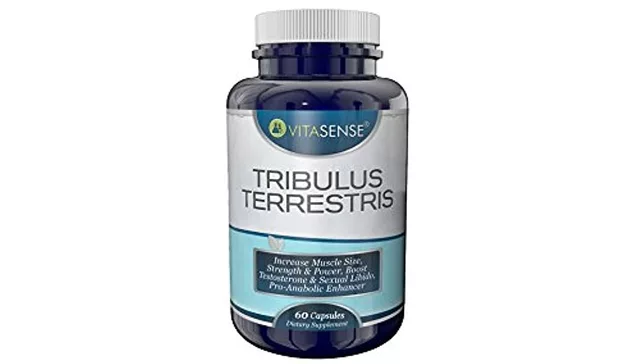Organ rejection is the immune system’s response that attacks a transplanted organ, recognizing it as foreign tissue. This reaction can turn a life‑saving transplant into a serious complication within days or months. Understanding why it happens and what doctors do to stop it helps patients feel more in control of their recovery.
TL;DR
- Organ rejection occurs when the recipient’s immune system sees donor tissue as a threat.
- Key triggers are mismatched HLA antigens and activation of T cells.
- Prevention relies on precise donor‑recipient matching, lifelong immunosuppressive therapy, and emerging tolerance techniques.
- Monitoring blood levels of drugs and early biopsy can catch rejection before damage spreads.
- Future strategies aim to re‑educate the immune system rather than suppress it.
What Exactly Is Organ Rejection?
When a donor organ is placed inside a recipient, the body’s immune system a network of cells and proteins that protects against infections evaluates the new tissue. If the immune cells detect proteins that don’t match the recipient’s own, they launch an attack. This process is called organ rejection. There are three classic patterns:
- Hyperacute rejection - occurs within minutes, caused by pre‑existing antibodies.
- Acute rejection - peaks in the first six months, driven by T‑cell activation.
- Chronic rejection - a slow, long‑term narrowing of blood vessels leading to organ failure.
The Immune Players Behind the Attack
The main culprits are T cells white‑blood cells that recognize and destroy foreign antigens. They receive signals from antigen‑presenting cells showing donor proteins called Human Leukocyte Antigens (HLA). When T cells bind to these HLA markers, they proliferate and release cytokines, summoning more immune troops.
Another group, B cells produce antibodies that can target donor blood vessels, contributes to hyperacute and chronic rejection by creating antibodies that bind directly to the graft.
Why Does the Immune System See a Donor Organ As Foreign?
The core reason is HLA matching a genetic comparison of cell surface proteins between donor and recipient. Each person carries a set of HLA genes (A, B, C, DR, DQ). The more differences there are, the louder the immune alarm.
Even with a perfect HLA match, minor antigens called “non‑self peptides” can still provoke a response, especially if the recipient’s immune system is already sensitized from previous transplants, blood transfusions, or pregnancies.
How Doctors Keep Rejection at Bay
Prevention starts before the surgery and continues for life. The strategy breaks down into three pillars:
- Matching and screening - Advanced typing (next‑generation sequencing) narrows HLA mismatches to two or fewer loci whenever possible.
- Immunosuppressive drugs - Medications that blunt T‑cell activation, block cytokine signals, or inhibit antibody formation.
- Monitoring and early intervention - Regular blood tests for drug levels, donor‑specific antibodies, and protocol biopsies detect trouble early.

Immunosuppressive Regimens: The Heavy‑Lifters
Most patients follow a triple‑therapy regimen: a calcineurin inhibitor, an antiproliferative agent, and steroids. Below is a quick comparison of the most common drugs.
| Drug | Mechanism | Typical Dose | Major Side Effects |
|---|---|---|---|
| Tacrolimus | Calcineurin inhibition - blocks IL‑2 production | 0.1-0.2mg/kg daily | Nephrotoxicity, neurotoxicity, diabetes risk |
| Cyclosporine | Calcineurin inhibition - similar to tacrolimus | 5-15mg/kg twice daily | Hypertension, gum hyperplasia, kidney damage |
| Mycophenolate mofetil | Inhibits lymphocyte proliferation by blocking guanosine synthesis | 1-1.5g twice daily | Gastrointestinal upset, leukopenia, increased infection risk |
Therapeutic drug monitoring keeps blood levels in a narrow window - too low, and rejection spikes; too high, and toxicity looms.
Emerging Ways to Train the Immune System for Tolerance
Long‑term reliance on drugs isn’t ideal. Researchers are exploring "tolerance induction" - teaching the recipient’s immune system to accept the graft without constant suppression.
Promising approaches include:
- Regulatory T‑cell therapy - infusing lab‑grown Tregs that specifically dampen anti‑donor responses.
- Mixed chimerism - transplanting donor bone‑marrow cells so the recipient’s immune system re‑educates itself to view donor antigens as self.
- Costimulatory blockade - drugs like belatacept block the second signal T cells need to become fully activated.
Early clinical trials show reduced drug doses and lower chronic rejection rates, but large‑scale adoption is still a few years away.
Practical Tips for Patients to Reduce Their Rejection Risk
Even with the best medical plan, day‑to‑day habits matter:
- Take every dose exactly as prescribed - missed pills can cause a sudden spike in immune activity.
- Stay hydrated and monitor kidney function - many calcineurin inhibitors strain the kidneys.
- Avoid over‑the‑counter NSAIDs unless your doctor says it’s safe - they can worsen drug‑induced nephrotoxicity.
- Report any fever, rash, or unexplained pain promptly - early signs of acute rejection include tenderness over the transplanted organ and rising serum creatinine (for kidney transplants).
- Maintain a balanced diet rich in antioxidants - nutrients like vitamin D and omega‑3 fatty acids may modulate inflammation.
Looking Ahead: The Future Landscape of Transplant Medicine
Advances in genomics and bioengineering are reshaping how we think about rejection.
CRISPR‑based genome editing could create “universal” donor organs with stripped‑down HLA profiles, dramatically cutting mismatch risk. Meanwhile, 3‑D bioprinting aims to grow organs from a patient’s own cells, eliminating the immune barrier altogether.
Until those breakthroughs become routine, the combination of precise HLA typing, tailored immunosuppression, and vigilant monitoring remains the gold standard for keeping rejection at bay.
Frequently Asked Questions
What are the early warning signs of organ rejection?
Symptoms vary by organ but often include fever, pain at the transplant site, swelling, decreased organ function (e.g., rising liver enzymes or creatinine), and new skin rashes. Lab tests showing rising donor‑specific antibodies are also red flags.
How long do patients need to stay on immunosuppressants?
For most solid‑organ transplants, lifelong therapy is recommended. Some protocols allow dose reduction after several years if biopsies remain clean, but total cessation is rare.
Can a mismatch in HLA be compensated by stronger drugs?
Higher drug levels can blunt the immune response, but they also raise toxicity risk. The best approach is to minimize mismatches first, then tailor medication to the individual’s risk profile.
Is it safe to stop steroids after a transplant?
Some modern protocols taper steroids off within six months, especially for kidney and liver recipients, but this depends on the patient’s rejection history and other drug tolerances.
What lifestyle changes help lower rejection risk?
Stick to the medication schedule, maintain a heart‑healthy diet, exercise moderately, avoid smoking, limit alcohol, and keep infections at bay by practicing good hygiene and staying up‑to‑date on vaccinations approved for immunocompromised patients.






Angela Marie Hessenius
Organ transplantation, when viewed through the lens of cultural exchange, mirrors the delicate art of sharing treasured heirlooms across generations. Just as families guard heirlooms to preserve identity, the immune system guards the body’s self-recognition, launching a defensive chorus when a foreign graft arrives. The first wave, hyperacute rejection, can be likened to a sudden uproar at an unexpected visitor, a reflex rooted in pre‑existing antibodies that demand immediate removal. Acute rejection follows, a more calculated critique, where T‑cells convene like a council, scrutinizing minor mismatches in HLA antigens and orchestrating an offensive over several weeks. Chronic rejection, the slow erosion of trust, resembles the gradual fading of a once‑bright tapestry as threads wear thin, narrowing vessels and compromising organ function long after the initial celebration.\n
Understanding these stages is essential, for knowledge empowers patients to anticipate the immune system’s language and engage proactively with their medical team. Precise HLA typing, akin to a thorough genealogy, reduces the number of mismatched markers, lowering the probability of a hostile response. Immunosuppressive regimens, while heavy‑handed, act as diplomatic envoys, tempering the immune dialogue to allow coexistence. Monitoring drug levels is comparable to regulating diplomatic treaties, ensuring neither side oversteps its bounds. Emerging tolerance strategies aspire to rewrite the conversation entirely, teaching the immune system to recognize the graft as kin rather than foe.\n
Patients, therefore, become co‑architects of their own healing, adhering to medication schedules, staying vigilant for subtle signs such as unexplained fevers or rising creatinine, and fostering lifestyles that support organ health. In this shared journey, science, culture, and personal resolve intertwine to transform a potential battle into a lasting partnership.
Julian Macintyre
While the preceding exposition admirably surveys the immunological terrain, one must emphasize the incontrovertible primacy of HLA congruence as the cornerstone of graft viability. It is a regrettable truism that even the most sophisticated immunosuppressants cannot wholly counterbalance a profoundly discordant antigenic profile. Accordingly, the allocation algorithms employed by organ registries should be calibrated with an unyielding rigor, lest we indulge in a complacent reliance upon pharmacologic suppression alone. Moreover, the inevitable nephrotoxicity associated with calcineurin inhibitors mandates a vigilant, oft‑daily appraisal of renal biomarkers; any deviation, however minute, warrants immediate therapeutic recalibration. In summation, the hierarchy of preventative measures remains unequivocal: optimal matching, meticulous drug monitoring, and judicious dose titration, each executed with a precision befitting the gravity of transplantation.
Calvin Smith
Alright, let’s cut through the jargon and get real about this whole rejection circus. The immune system is basically that over‑protective sibling who never lets anyone borrow their stuff without a full‑blown interrogation. If you think tossing a handful of drugs at the problem will magically make the body forget it’s hosting a stranger, you’re living in a fantasy world. T‑cells aren’t just lazy bouncers; they’re the elite special forces, honing in on even the tiniest HLA mismatches like a bloodhound on a scent. And don’t even get me started on those chronic rejections – they creep up slower than a snail on a marathon, but when they hit, it’s a full‑scale siege on your vasculature.
So here’s the skinny: get the best match you can, stick to your meds like it’s a Netflix binge, and for the love of science, keep those kidneys hydrated. Skipping a dose isn’t a rebel act; it’s an invitation for your immune army to throw a party you definitely don’t want. Bottom line – respect the science, or you’ll pay the price in graft loss and regret.
Brenda Hampton
Spot on, Calvin! Your no‑nonsense take is a refreshing reminder that consistency wins the day. It’s easy to get lost in the sea of acronyms, but at the end of the day, taking that tacrolimus dose on schedule is a small habit with massive payoff. Keeping the kidneys happy with adequate fluids is also a game‑changer – the kidneys love a good cup of water almost as much as they love a stable drug level. Stay motivated, stay vigilant, and the graft will thank you.
Lara A.
Do you really believe the mainstream med industry wants you to survive? They mask the truth with glossy brochures!!! The HLA‑matching is a sham, the drugs are poison, the monitoring is a surveillance tool!!! Wake up!!!
HAMZA JAAN
Well, Lara, while your passion is certainly… palpable, the suggestion that the entire transplant ecosystem is a grand deception doesn't hold up under scrutiny. The peer‑reviewed studies consistently demonstrate improved graft survival with the protocols we’ve outlined. It might be more productive to focus on patient education rather than propagating unfounded alarmism.
April Rios
Consider, if you will, the transplantation process as a microcosm of existential negotiation: the organ, an embodiment of potentiality, confronts the host’s predetermined ontology. The immune response, then, is not merely a biological reflex but a philosophical assertion of self‑identity, a dialectic tension between being and becoming. Embracing tolerance therapies invites a paradigm shift, suggesting that the self may expand to incorporate the other without surrendering its essence. Thus, the future of transplant medicine may well hinge upon our willingness to reconceptualize the boundaries of selfhood.
byron thierry
April, your philosophical musings are insightful, yet let us not lose sight of the practicalities that accompany such lofty ideals. From a clinical standpoint, the implementation of tolerance‑inducing protocols demands rigorous trial design, standardized dosing regimens, and robust post‑procedure surveillance. Only through disciplined adherence to these methodological pillars can we hope to translate theoretical tolerance into tangible graft longevity.
bob zika
Byron, I concur wholeheartedly with your emphasis on methodological rigor; moreover, collaborative data sharing between transplant centers could accelerate the validation of these tolerance strategies. A unified registry, aggregating outcomes across diverse demographics, would furnish the statistical power necessary to discern subtle efficacy trends. Such collective effort is indispensable if we aspire to elevate the standard of care universally.
M Black
Don’t skip your meds, stay hydrated, and you’ll be good! 😊
Sidney Wachira
Wow, M Black, you’ve summed it up in one line, but let’s not underestimate the gravity of that simplicity – it’s a rallying cry for every transplant patient out there! 💪